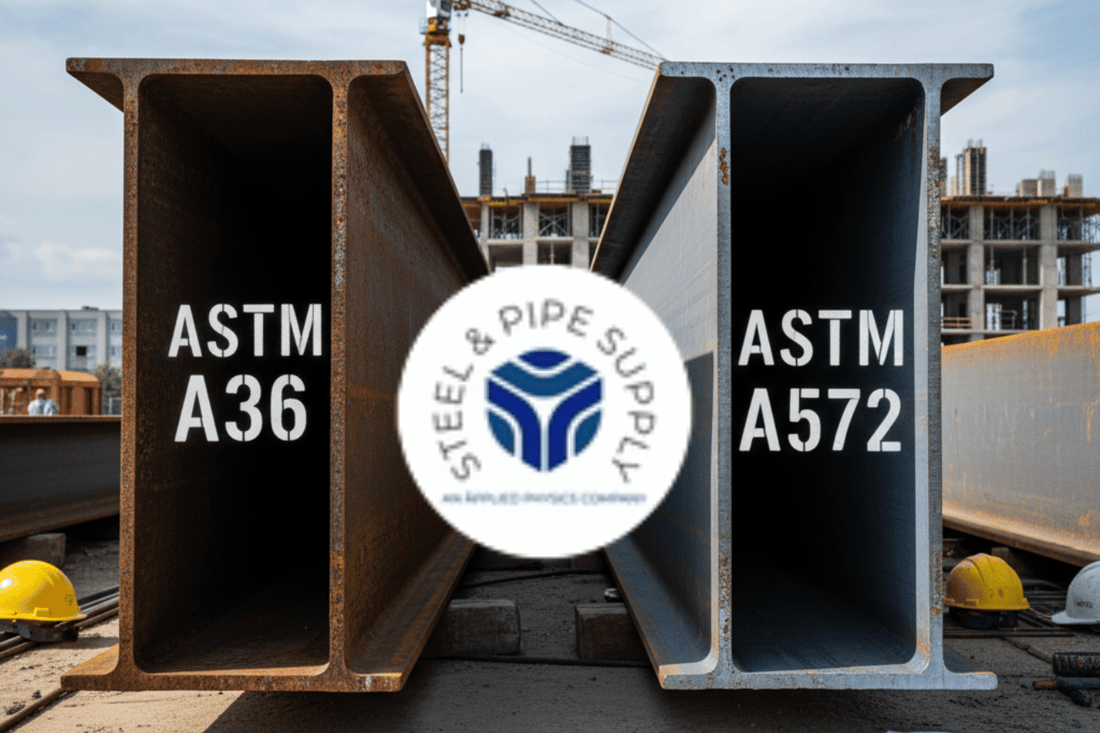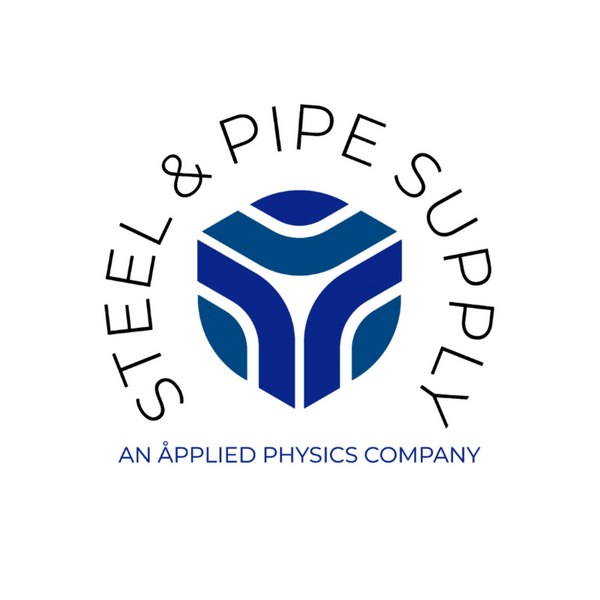
What's the Difference Between ASTM A36 and A572?
Share
When you select structural steel for your project, choosing the right grade is very important for safety, performance, and cost-effectiveness. Two of the most commonly specified steel grades are ASTM A36 and ASTM A572.
This article presents a detailed comparison of these two standards, covering their chemical and mechanical properties, applications, cost, and selection criteria, so that you can make the best decision.
What is ASTM A36 Steel?
ASTM A36 is a standard specification for carbon structural steel, widely used in construction and manufacturing. It is classified as a mild or low-carbon steel, offering a good balance of strength, ductility, and weldability.

A36 is known for its versatility and affordability, making it a go-to material for a broad range of structural and fabricated applications.
Key Features of ASTM A36
- Standard: ASTM A36/A36M
- Product Forms: Plate, bar, angle, channel, H-beam, I-beam, and more
- Manufacturing Process: Hot-rolled; can be normalized, annealed, or stress-relieved
- Weldability: Excellent; suitable for all common welding methods
- Machinability: Good; easy to cut, drill, and form.
What is ASTM A572 Steel?
ASTM A572 is a high-strength, low-alloy (HSLA) structural steel standard, designed for applications requiring greater strength and durability. It is available in several grades (42, 50, 55, 60, and 65), with Grade 50 being the most commonly used.

A572 is favored for its superior strength-to-weight ratio, toughness, and weldability, making it ideal for demanding structural applications.
Key Features of ASTM A572
- Standard: ASTM A572/A572M
- Product Forms: Plates, bars, structural shapes, sheet piling
- Grades: 42, 50, 55, 60, 65 (increasing in strength)
- Weldability: Good; requires attention to technique due to higher strength
- Durability: Excellent; suitable for outdoor and high-stress environments.
Chemical Composition: A36 vs A572
Understanding the chemical makeup of each steel grade is essential for predicting performance and suitability.
1) ASTM A36 Chemical Composition
| Element | Content (%) |
|---|---|
| Carbon (C) | 0.25 – 0.29 |
| Manganese (Mn) | 1.03 |
| Phosphorus (P) | 0.040 |
| Sulfur (S) | 0.050 |
| Silicon (Si) | 0.280 |
| Copper (Cu) | 0.20 |
| Iron (Fe) | Balance |
2) ASTM A572 Chemical Composition (Typical for Grade 50)
| Element | Content (%) |
|---|---|
| Carbon (C) | ≤0.23 |
| Manganese (Mn) | ≤1.35 |
| Phosphorus (P) | ≤0.04 |
| Sulfur (S) | ≤0.05 |
| Silicon (Si) | 0.15–0.40 |
| Iron (Fe) | Balance |
Common Applications and Use Cases
1) ASTM A36 Applications
- Building frames (columns, beams, girders)
- Bridges (beams, trusses)
- Infrastructure (oil rigs, towers)
- Equipment and machinery frames
- Automotive and agricultural parts
- Plates, bars, brackets, base plates, gussets.

2) ASTM A572 Applications
- Building frames and high-rise structures
- Bridges (girders, trusses)
- Highway and transportation infrastructure (guardrails, sign supports)
- Heavy equipment and truck frames
- Poles, liners, boom sections
- Energy sector power plant supports, wind turbine towers.

Selection Criteria: Which Steel Should You Choose?
| Criteria | ASTM A36 | ASTM A572 |
|---|---|---|
| Strength | Moderate | High |
| Cost | Lower | Higher |
| Weldability | Excellent | Good (requires attention) |
| Durability | Standard | Superior (weather resistance) |
| Availability | Very high | High (multiple grades) |
| Formability | Easier | Less easy |
| Typical Applications | General construction, frames | Bridges, heavy structures |
Selections Tips:
- Choose A36 for general, cost-sensitive projects with moderate strength requirements and where ease of fabrication is important.
- Choose A572 for high-stress, outdoor, or critical applications where higher strength, durability, and weather resistance are required.
Mechanical Properties: A36 vs A572
The mechanical properties of steel determine its performance under load and in various environments.
| Property | ASTM A36 | ASTM A572 (Grade 50) |
|---|---|---|
| Yield Strength (MPa) | 250 | 345 |
| Tensile Strength (MPa) | 400–550 | 450–620 |
| Elongation (%) | 20 | 18 |
| Modulus of Elasticity | 200 GPa | 200 GPa |
| Weldability | Excellent | Good |
| Machinability | Good | Moderate |
Cost Comparison: A36 vs A572
- A36 Steel: Generally less expensive and more widely available, making it a cost-effective choice for general applications.
- A572 Steel: Higher initial cost due to enhanced strength and alloying elements, but may offer savings in material weight and long-term durability.
Weldability and Fabrication</h2>
- A36: Known for excellent weldability and ease of fabrication, making it ideal for projects requiring extensive welding or reshaping.
- A572: Also weldable, but may require more attention to technique due to higher strength and alloy content.
Conclusion
Choosing between ASTM A36 and A572 steel depends on your project’s specific requirements. If you need a cost-effective, easy-to-fabricate material for general construction, A36 is an excellent choice.
For projects demanding higher strength, durability, and performance such as bridges, heavy equipment, or outdoor structures A572 is the superior option.
Always consider your application’s strength, cost, fabrication, and environmental needs to select the right steel grade for your project
Frequently Asked Questions (FAQs)
1. What is the main difference between ASTM A36 and A572 steel?
The main difference is strength: A572 is a high-strength, low-alloy steel, while A36 is a standard carbon steel with lower strength. A572 is better for heavy, high-stress applications, while A36 is more cost-effective for general use.
2. Can both A36 and A572 be welded?
Yes, both can be welded, but A36 is easier to weld and fabricate. A572 may require more attention to welding technique due to its higher strength.
3. Which steel is better for outdoor structures?
A572 is preferred for outdoor or exposed structures due to its superior durability and resistance to environmental stress.
